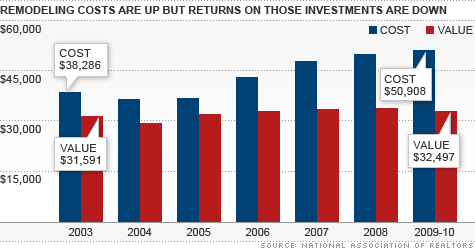Fewer homebuyers calling off contracts
Denver Business Journal - by Paula Moore
Cancellation rates for buyer contracts on newly built homes were down by half in late 2009, and the rate of home shoppers who buy was up, indicating an improving Denver-area housing market.
The improvements in new-home sales were driven largely by the federal government’s first-time homebuyer tax credit, which provides as much as $8,000 toward the cost of a home, according to housing experts.
Weekly cancellations in November and December averaged roughly 22 percent, compared to 40 percent to 45 percent for the same months of 2008, according to housing industry data provider Metro-study Inc. of Houston.
“Contracts spiked in October because of buyers’ anticipation of the tax credit’s expiration in November,” said John Covert, Metrostudy director for Colorado and New Mexico. “People were feeling anxious.”
The U.S. Congress extended the first-time homebuyer tax credit, which was set to expire Nov. 30, in early November and added a $6,500 credit for existing home-owners wanting to buy a home. Both credits expire April 30, 2010, and home sales must close by June 30.
“The conversion rate of people who walk in and sign a contract has gone up,” said Roger Reinhardt, executive vice president of the Home Builders Association of Metro Denver (HBA). “That’s a good sign.”
The conversion rate is the amount of people in a week who go into a builder’s sales office and end up signing a purchase contract. If 1,000 people meet with a builder in a week, for example, and 100 of them sign purchase contracts, that’s a 10 percent conversion rate.
Metro Denver’s weekly home-sale conversion rate increased to nearly 6 percent in December from roughly 5 percent for the same month of 2008 and 4 percent one year earlier, according to Metrostudy.
“The conversion rate of buyer traffic into sales contracts … has been higher in 2009 than in the previous three years, and it’s almost entirely due to the first-time homebuyer tax credit,” Covert said.
But the federal tax credit isn’t the only reason why more homebuyers are signing purchase contracts and closing the deals this year.
“We had a lot of lookie-loos a few years ago — people who were looking for a new home because they felt they should be — but those people are gone,” Covert said. “People out there looking now are motivated to buy; they’ve got credit.”
Homebuilding analysts expect metro Denver’s new-home market to remain challenging in 2010, but they think this region is in a better position to rebound than are many others. That’s partly because local builders are being disciplined — building to meet demand, rather than doing a lot of speculative construction.
“Housing starts are likely to go up next year, even if demand stays the same, because we’re out of inventory,” Covert said.
All contents of this site © American City Business Journals Inc. All rights reserved.






